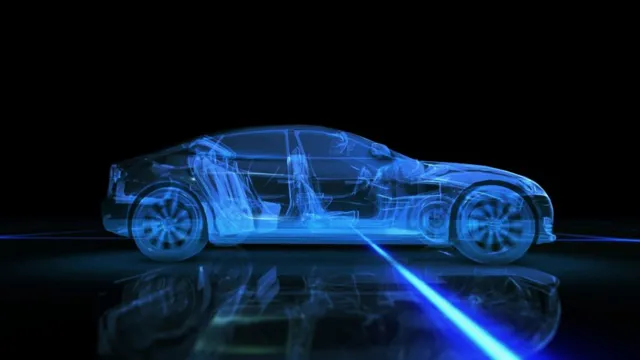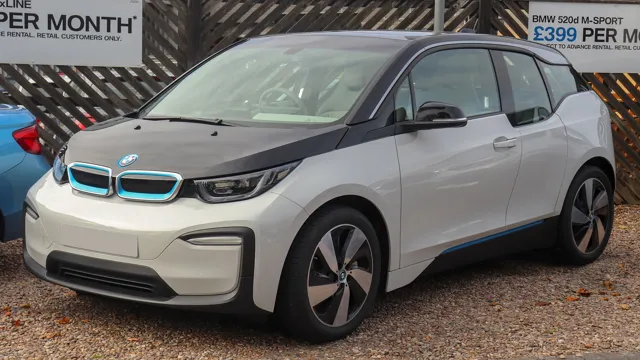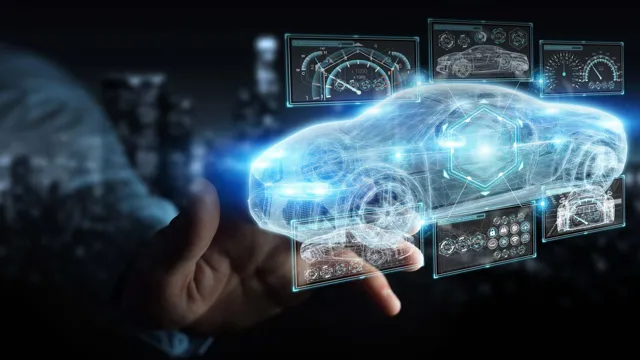Breaking Down the Top Technological Hurdles Holding Back Electric Cars
Electric cars have risen in popularity in recent years due to their eco-friendliness and cost-effectiveness. Though they offer numerous benefits, there are still some technological limitations that hinder their widespread adoption. In this blog, we will explore some of the challenges that electric car manufacturers face and how they are working to overcome them.
From battery range to charging infrastructure, we will delve deeper into the complexities of electric cars and how advancements in technology are helping to iron out the kinks. Join us on this ride as we explore the realm of electric cars and the hurdles that come with it.
Battery Capacity
One of the biggest technological limitations for electric cars is battery capacity. While battery technology has improved significantly in recent years, the limited range of electric vehicles remains a major concern for consumers. Most electric cars can only travel between 100 and 200 miles on a single charge, which is far less than the range of a typical gasoline-powered car.
This makes electric cars impractical for long-distance driving and can cause “range anxiety” for drivers who are worried about running out of charge. While car manufacturers are working to improve battery technology and develop faster charging methods, it will likely be several years before electric cars can match the range and convenience of traditional cars.
Range Anxiety and Charging Time
Battery capacity is a crucial factor when it comes to addressing range anxiety and charging time issues for electric vehicles. The larger the battery capacity, the longer the car can go between charges and the quicker it can be charged. Many EV manufacturers are now offering options with different battery capacities to cater to different driving needs and budget constraints.
Some even offer fast charging capabilities that can add hundreds of miles of range in just a few minutes of charging time. This allows drivers to recharge their vehicles quickly during long road trips or even during short stops on their daily commute. It’s like having a bigger gas tank that gets filled up faster than before.
However, larger batteries can also mean higher costs and heavier weight, which can impact the overall performance and efficiency of the vehicle. Finding the right balance between battery capacity and cost is key to making electric vehicles more accessible and practical for everyday use.

Cost of Battery Production and Replacement
Battery capacity is a crucial factor in determining the overall cost of battery production and replacement. Batteries with higher capacity generally cost more to produce and replace. This is because they require more advanced technology and materials to support their extended lifespan and greater power output.
On the other hand, lower-capacity batteries may come with cheaper price tags, but they may also require more frequent replacements due to their shorter lifespan. Ultimately, the choice of battery capacity depends on the user’s needs and budget. For instance, if you use your device regularly and require it to be operational for long hours, investing in a high-capacity battery may prove cost-effective in the long run.
Conversely, if you use your device occasionally, a lower-capacity battery may suffice.
Infrastructure
One of the biggest challenges for electric cars is the lack of charging infrastructure. While gas stations are ubiquitous, charging stations are still few and far between in most parts of the world. This can lead to “range anxiety” for electric car owners, who worry about running out of battery power before they can reach a charging station.
Additionally, charging an electric car can take much longer than filling up a gas tank. Fast-charging stations can provide an 80% charge in about 30 minutes, but this is still much longer than the few minutes it takes to fill up a tank of gas. Finally, the electrical grid may not be able to support a large number of electric cars charging at the same time, which could lead to blackouts or brownouts.
All of these factors contribute to the technological limitations of electric cars and must be addressed if electric cars are to become a more viable option for everyday transportation.
Charging Station Availability
Charging stations are a crucial infrastructure element for electric vehicles. The availability of these stations can be the deciding factor for EV owners to plan their trips. The rise in the number of EVs has led to an increase in the demand for charging stations.
Governments and private entities are investing in developing and deploying charging stations in public and private places. The quick deployment of these stations helps in expanding the charging infrastructure network, which in turn boosts the adoption of EVs. The availability of charging stations in rural areas and highways is as important as in cities.
Rapid charging stations installed along highways can provide EV owners with a sense of relief knowing that they can charge their vehicles quickly during long drives. In summary, the availability of charging stations plays an essential role in making EV ownership more convenient and practical.
Grid Capacity and Upgrades
Grid capacity is a critical aspect of any infrastructure, as it plays a vital role in supplying electricity to homes, businesses, and industries. With the increasing demand for power, the need for grid upgrades becomes more apparent. These upgrades can take the form of new technologies such as smart grids that can manage power usage more efficiently and reduce waste.
It could also involve the installation of new transmission lines or substations to increase capacity. Grid upgrading and capacity expansion projects can be quite challenging due to the scale and complexity involved. Nevertheless, they are essential for ensuring that the power grid can keep up with the changing energy demands of the population.
As technology advances, there will be a constant need for grid enhancements and upgrades to keep pace with growing energy needs.
Interoperability and Standards
Interoperability and Standards are crucial to the development of infrastructure in the digital world. In order for different technologies to work seamlessly together, they need to adhere to the same set of standards. This ensures that different systems can communicate with each other and share data effectively.
Without interoperability and standardized protocols, we would not be able to have interconnectivity between devices, networks, and platforms. Think of it like different languages; if two people speak different languages, they cannot communicate effectively. However, if they both speak the same language, they can easily understand each other and work together towards a common goal.
The same principle applies to digital infrastructure. Therefore, adherence to standards and interoperability is crucial in ensuring a connected, efficient, and effective digital ecosystem.
Performance
When it comes to electric cars, there are certainly some technological limitations that need to be considered. One of the biggest challenges is battery performance. While electric car batteries have come a long way in recent years, they are still limited in terms of the amount of power they can hold and how far they can go.
This means that most electric cars have a limited range and require frequent charging. This can be a major issue for people who need to travel long distances or who live in areas without a lot of charging infrastructure. Another limitation is the speed of charging.
While some electric vehicles can be charged relatively quickly, others take several hours to fully charge. Additionally, the cost of electric cars is often higher than conventional cars, making them less accessible to some consumers. Despite these limitations, electric cars are still an important part of the push towards more sustainable transportation options and advancements in technology are continuing to improve their performance.
Acceleration and Top Speed
When it comes to performance in vehicles, two factors that are often talked about are acceleration and top speed. Acceleration refers to how quickly a vehicle can go from a standstill to a set speed, while top speed refers to the maximum speed a vehicle can achieve. These factors are essential when it comes to determining a car’s overall performance, and both are influenced by a variety of factors.
The weight of a vehicle, its engine power, and transmission all play a role in determining acceleration and top speed. Additionally, external factors such as road conditions and weather can also impact a car’s performance. Regardless of the type of car or vehicle, the performance specifications are always an important consideration for anyone looking to get the most out of their ride.
Terrain and Weather Conditions
When it comes to off-road performance, the terrain and weather conditions play a significant role in determining the vehicle’s performance. Different terrains require specific types of vehicles and tires that can conquer the rough patches, muddy roads, and steep hills. Similarly, the weather conditions such as rain, snow, or ice can cause a significant impact on the vehicle’s performance.
For example, snowy and icy roads demand extra traction and control, which can be achieved by using specialized snow tires that provide better grip and stability. On the other hand, muddy and wet terrains require larger tires with deeper grooves that prevent the mud from getting stuck. Therefore, it is essential to understand the terrain and weather conditions before choosing a vehicle or upgrading the tires to ensure optimal off-road performance.
User Experience
Electric cars have come a long way, but there are still some technological limitations that can hinder their user experience. One challenge is range, which refers to the distance an electric car can travel on a single charge. This is determined by the capacity of the car’s battery and the efficiency of its motor.
Although electric cars are becoming more advanced, they still have a lower range than most gas-powered cars. Another limitation is the lack of charging infrastructure. While there are more charging stations available now compared to a few years ago, electric car owners can still face difficulty finding a charging point.
Additionally, charging times can be lengthy, which can be an inconvenience for drivers who need to quickly top up their battery. Finally, the cost of electric cars can still be prohibitive, though this is gradually becoming less of an issue as prices decrease and incentives increase. Overall, while electric cars offer many benefits, technological limitations must be overcome to make them a practical and widely adopted option for drivers.
Limited Model Selection
Limited model selection can greatly impact user experience when it comes to technology products. When users are limited to a few options or models to choose from, this may lead to frustration and dissatisfaction. This is especially true when one of the options doesn’t meet their specific needs or preferences.
As a result, users may spend more time researching alternatives or settle for a less-than-ideal option. This is where companies that offer a wide range of models can really stand out, as they can cater to a broader audience. For example, a smartphone company that offers multiple models with different sizes, camera capabilities, and overall features will likely attract a larger customer base.
Therefore, it’s important for companies to consider the impact of limited model selection on user experience and strive to provide a range of options to meet varying needs.
Lack of Noise and Vibration for Safety
When it comes to safety, it’s essential to consider all possible ways to prevent accidents. That’s why having a lack of noise and vibration in certain situations can greatly contribute to a safer user experience. For example, in transportation, less noise and vibration in cars and trains can reduce the risk of distracted drivers or passengers.
Additionally, in industrial machinery, fewer vibrations can prevent potential hazards and improve workers’ comfort and productivity. Overall, reducing noise and vibration in different scenarios can positively impact safety for individuals and the environment. By implementing these measures, companies can take a significant step towards providing a safer and more pleasant experience for their users.
Conclusion
In conclusion, while electric cars undoubtedly offer a plethora of benefits, including a greener and cleaner future, there are still some technological limitations that need to be addressed. Range anxiety, battery charging times, and infrastructure development are just a few of the hurdles that must be overcome. Nonetheless, we must remember that every great revolutionary technology has faced challenges in its early stages, and it is only a matter of time before electric cars become the norm rather than the exception.
So, while electric cars may have some limitations today, who’s to say they won’t be zooming past petroleum cars on the racetrack tomorrow?”
FAQs
What is the range of most electric cars and how does this limit their practicality for long distance driving?
Most electric cars have a range of 100-300 miles per charge, which can limit their practicality for long distance driving. However, charging infrastructure is rapidly expanding, making long distance travel more feasible.
How do cold temperatures affect the performance of electric car batteries?
Cold temperatures can decrease the range of electric cars and affect the overall performance of the batteries. Additionally, heating the cabin can drain the battery even further.
How do electric car charging times compare to refueling times for gas-powered cars?
Electric car charging times vary depending on the charging station and the car’s battery, but they can range from a few hours for a Level 2 charger to up to an hour for a fast charger. This is generally slower than the time it takes to refuel a gas-powered car.
How does the weight of electric car batteries affect their efficiency and practicality?
The weight of electric car batteries can affect their efficiency and practicality, as heavier batteries require more energy to move the car and decrease the overall range. However, advancements in battery technology are working to make batteries lighter and more efficient.





